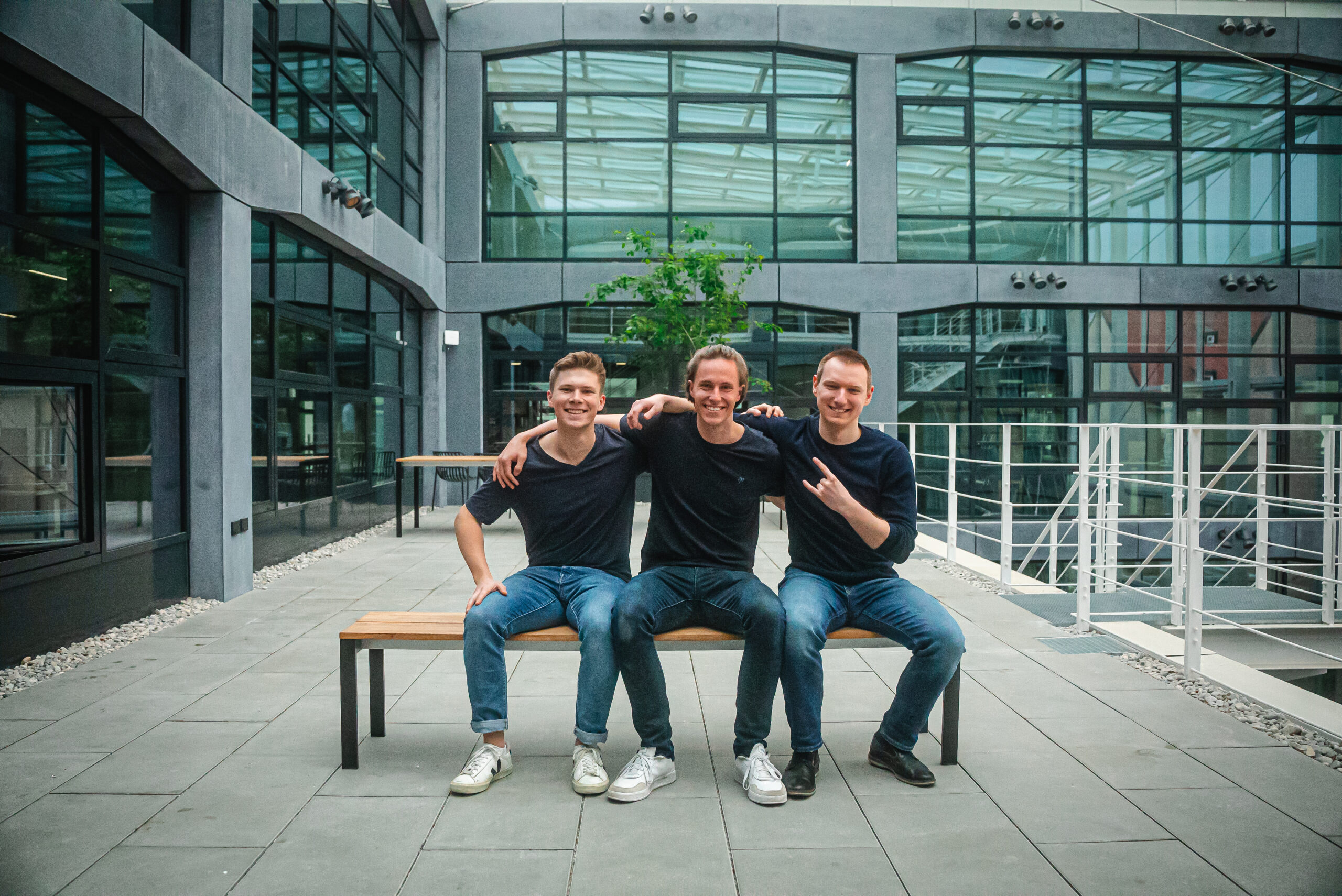
Dr. Brooke Gazdag, Organizational Psychologist.
picture: jr@josephruben.com
THREE ASPECTS OF NETWORKING
Chatting with someone while standing in line for a coffee, having lunch with colleagues, meeting up after panel discussions – networking as we knew it was hardly possible due to contact and travel restrictions. As a result, digital frontrunners in particular became resourceful, embracing new, virtual ways of connecting and even carving out some advantages. Therefore, virtual forms of exchange and collaboration will certainly endure, even as global immunization campaigns have picked up steam and restrictions are lifted. Thanks to increased efficiency, convenience, and the fact that we have simply become accustomed to screen-based exchanges, we will certainly see more hybrid formats in the future. We asked ourselves: What opportunities for networking with academic experts and practitioners have emerged that now need to be seized and expanded?
Dr. Brooke Gazdag, an Organizational Psychologist, Assistant Professor at the University of Amsterdam and former Postdoctoral researcher at TUM, gave an insightful lecture on “Leadership and Networking” as part of our Executive MBA and Professional Master programs earlier this year. To get her expert view on how to connect without being physically present, we talked to her about networking, how it has changed, and how to leverage the potential of the working world going online.
Almost 16 months after the initial spread of COVID-19, many of us have adapted to the new forms of working and networking. Operating digitally has become the new normal. “The key with any digital change is not to try to copy and paste our habits to the digital world but rather to recognize and analyze the changes. This helps us to identify opportunities opening up as a result of the disruption,” states Gazdag. “In short, the key is to let the situation work to your advantage.” Although it may seem that our limited freedom to act has led to a loss of spontaneity and serendipity, this is not necessarily the case for networking. Digital tools allow us to arrange a virtual meeting without too much planning beforehand – regardless of the participants’ locations. Meeting someone in Australia is now just as easy as having a conversation with someone from your office. Of course, the technologies enabling us to do that were available before, but were not as widely used in most industries. “We were forced to go digital, but we certainly have the opportunity to embrace it now,” emphasizes Gazdag. For employees, the new routines can bring more flexibility. Ultimately, collaborating virtually and remotely could actually lead to more diverse and inclusive work environments.
To counter the lack of personal proximity and digital fatigue, it is helpful to be proactive and creative when preparing virtual meetings. Gazdag gives some input: “Personally, I started to offer a ‘walk and talk’ where both parties can take the call outside.”
For some, connecting with people is part of their DNA and it seems like their circle grows effortlessly. But everyone can develop certain skills to become a better networker. Gazdag emphasizes three aspects that are key to getting it done: “Firstly, keep your eyes open – we have to be aware of opportunities and influential people that cross our path. Secondly, as important as forming new connections are, it is just as important to maintain it and regularly check in with others. Digital networking platforms like LinkedIn make that significantly easier by offering opportunities to comment and congratulate others’ accomplishments with the click of a button. Ultimately, we have to actually use the network, not just for our own gains, but also to help others,” says Gazdag. Because here the old adage rings true: what goes around comes around. “You can be a great networker simply by connecting people who would benefit from each other,” explains Gazdag. In fact, mastering this requires the constant scanning of your connections and environment.
Every connection can be beneficial for a different reason. Some are ideal for daily collaborations, some might be perfect when weighing major career decisions. “You may find that you have more resources available to you than you think,” encourages Gazdag. “Be vocal about what you are looking for and let others know. Find someone whose career or life looks like the one you would like to have and connect with them.”
In the spirit of networking, be sure to connect with Dr. Gazdag on LinkedIn, Twitter or via her website and stay connected with us on Social Media: TUM Institute for LifeLong Learning and TUM School of Management.
The post “We were forced to go digital, but we certainly have the opportunity to embrace it now.” appeared first on Technical University of Munich – School of Management.



